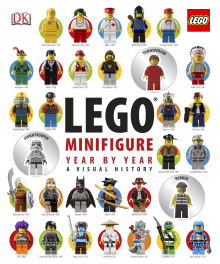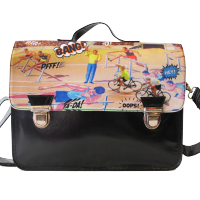If you’re excited by trivia and facts – as many Lego enthusiasts and aficionados are – this stunning visual guide makes fascinating viewing of the iconic little folk who make up the Lego community.
Back in 1975, Lego was already an established brand famed for its iconic construction bricks. But if you wanted to populate your creations with folk, you just had to fashion them out of bricks. To address children’s desire for role-play and storytelling, design Jens Nygard Knudsen and his team created the first scaled-down Lego figure with a blank yellow head, a torso with arm-shaped bumps, and a single solid leg.
In 1978, the precursor to the mini figure was updated with moving arms and legs, the distinctive cup-shaped claw hand that could grasp accessories, and a face painted with two dots for eyes and a wide friendly smile (It wasn’t until 1989 that the first minifigs with different facial expressions appeared, with stubble-faced pirates with peg leg and hook-hands).
From 1975 to present day, this book offers a year-by- year roll call of all the Lego minifigure favourites from Legends of Chima, Star Wars and Batman to Harry Potter and Ninjago
The book also comes with three iconic mini figures.
Did you know? The first female mini figure went through many concept stages (featuring skirts and dresses) before it was decided that she would share them same standard legs as male mini figures.
Minifigure Facts
- Size matters. Without a hat or hairpiece, a minifigure stands exactly four Lego bricks high. This precise measurement makes it easy to construct Lego buildings and vehicles to accommodate figures.
- In 1979, the US patent for the Lego minifigure recognised its iconic shape, the brick-compatible holes in its feet and legs, and the way its limbs could move.
- The first Lego minifigure every produced was a police officer for the Legoland Town theme.
- The total number of minifigure produced could fill around 170 standard-sized swimming pools.
- Yellow was chosen for minifigures from the original Lego colour palette as an ethnically neutral colour – to represent all races and ethnicities.





